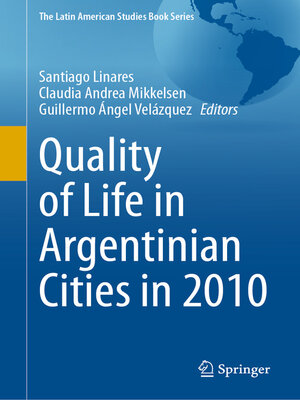Quality of Life in Argentinian Cities in 2010
ebook ∣ The Latin American Studies Book Series
By Santiago Linares

Sign up to save your library
With an OverDrive account, you can save your favorite libraries for at-a-glance information about availability. Find out more about OverDrive accounts.
Find this title in Libby, the library reading app by OverDrive.



Search for a digital library with this title
Title found at these libraries:
| Library Name | Distance |
|---|---|
| Loading... |
This book introduces a quality of life index that compares the intra-urban particularities of 23 cities in the Argentine Republic. Integrating demographic size, functional specialization, and regional location, the chapters employ a standard set of variables to assess socioeconomic and environmental inequality and wellbeing.
A result of collaboration between 33 contributors from institutions around the country, the book provides a rich assessment of the mechanisms and processes by which the residential areas of Argentinian cities form, change, develop, and decline. Consistent measures of education, health, housing, and environmental wellbeing allow for deep examinations of each area and meaningful comparisons between them.
The book also explores patterns that recur in multiple cases. Redevelopment and renewal processes in central and old areas of cities can lead to the creation or reenergization of modern, high-density neighborhoods that, benefitting from new construction and integrated commercial and service areas, exhibit high quality of life indices. Urban expansion stands out as a process that often results in or reinforces socio-spatial segregation: New, exclusive, low-density residential neighborhoods with single-family homes and green areas tend to have a high level of quality of life, thanks to good education, health services, housing, and natural amenities. In contrast, low-income neighborhoods with precarious housing, limited access to health and education services, and unfavorable environments exhibit lower quality of life measures. Increasingly common gated communities—with private security, exclusive services, and (internally) shared recreational spaces—reinforce this pattern of segregation.
Analyzing the quality of life in different Argentinian cities is important to understanding the living conditions of the inhabitants, identifying areas for improvement, and supporting the development of inclusive and sustainable policies. These measurements can facilitate more just and prosperous environments for all citizens.







